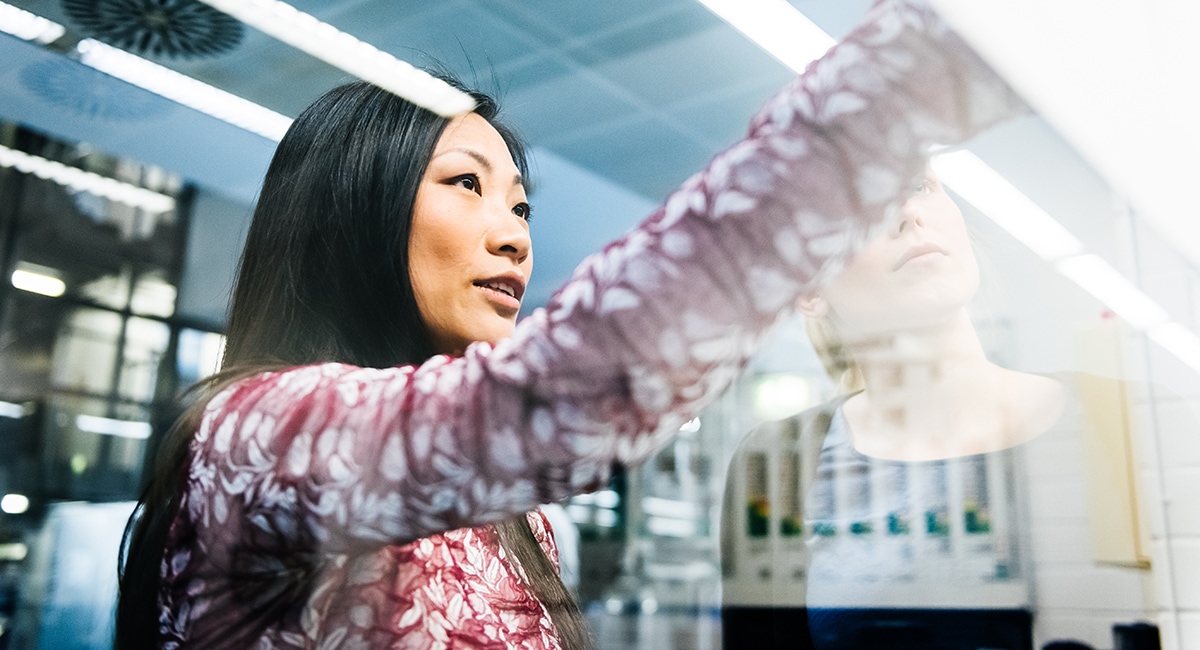November 06, 2019
Why Whiteboards Are a Valuable but Underappreciated Collaboration Tool
Simplicity and utility make whiteboarding useful in a variety of office settings.

Last year, my 4-year-old son accompanied me to my office one day. While I took a quick call, he made his way to the digital whiteboard set up along the wall and picked up the pen to draw. Before long, he was switching out the different pen tips to change colors — intuitively using the digital tool to express the ideas in his head.
When grown-ups talk about the power of collaboration tools, we often emphasize their simplicity and ease of use. And yet, for some reason, the most overlooked collaboration tool is perhaps the simplest and most intuitive tool of all, a tool your own hands and fingers could use: the digital whiteboard.
Traditional Whiteboards: Useful but Limited
Standard whiteboards have been workplace staples for many years. Most offices have a large whiteboard surface covering a wall, or at least a few portable dry erase easels scattered here and there. Anyone who has participated in a brainstorming session can probably speak to how useful it is to have a space where people can jot down and illustrate their ideas for an entire group to see.
I’ve seen organizations across a number of industries incorporate whiteboards effectively. When I worked as a programmer, for instance, it was common for engineers to toss lines of code up on the whiteboard to work through problems with one another. I’ve also seen whiteboards used extensively in education, marketing and many other lines of business.
The problem is that much of this brainstorming ends up getting lost when the whiteboard is erased. Now that smartphones are pervasive, many people will take a photograph of the board before the end of a meeting, but these photos often get lost among vacation snapshots and pictures of kids’ sporting events. And even when someone remembers to email a photo to the group, that’s typically where things end. Think about it: How many times have you gone back through your old emails to bring up a picture of a weeks-old brainstorming session, and then used that photo to inform the project you’re working on? It rarely happens.
A Digital Update to Whiteboarding
The magic of digital whiteboarding solutions is that they make it simple to save and circulate brainstorming sessions — and, therefore, ensure that the great ideas generated by teams don’t get lost in the shuffle of everyday work. A number of different types of digital whiteboarding tools can help organizations to enhance collaboration and preserve their teams’ best ideas. The major collaboration suites, including Microsoft Teams and Cisco Webex, have their own digital whiteboarding tools that allow team members in different locations to collaborate in real time while they’re on a call together. In fact, many organizations may already be paying for these features without even realizing it!
Other vendors have produced stand-alone tools that sometimes rely on cameras and software that capture and share images from traditional whiteboards. The level of real-time interaction and collaboration varies by solution, but I would argue that using nearly any of these tools is a better option than forgoing whiteboarding entirely. It’s too valuable to skip.
Want to learn more about tools that enhance business communication? Visit CDW.com/collaboration.
This blog post brought to you by:


